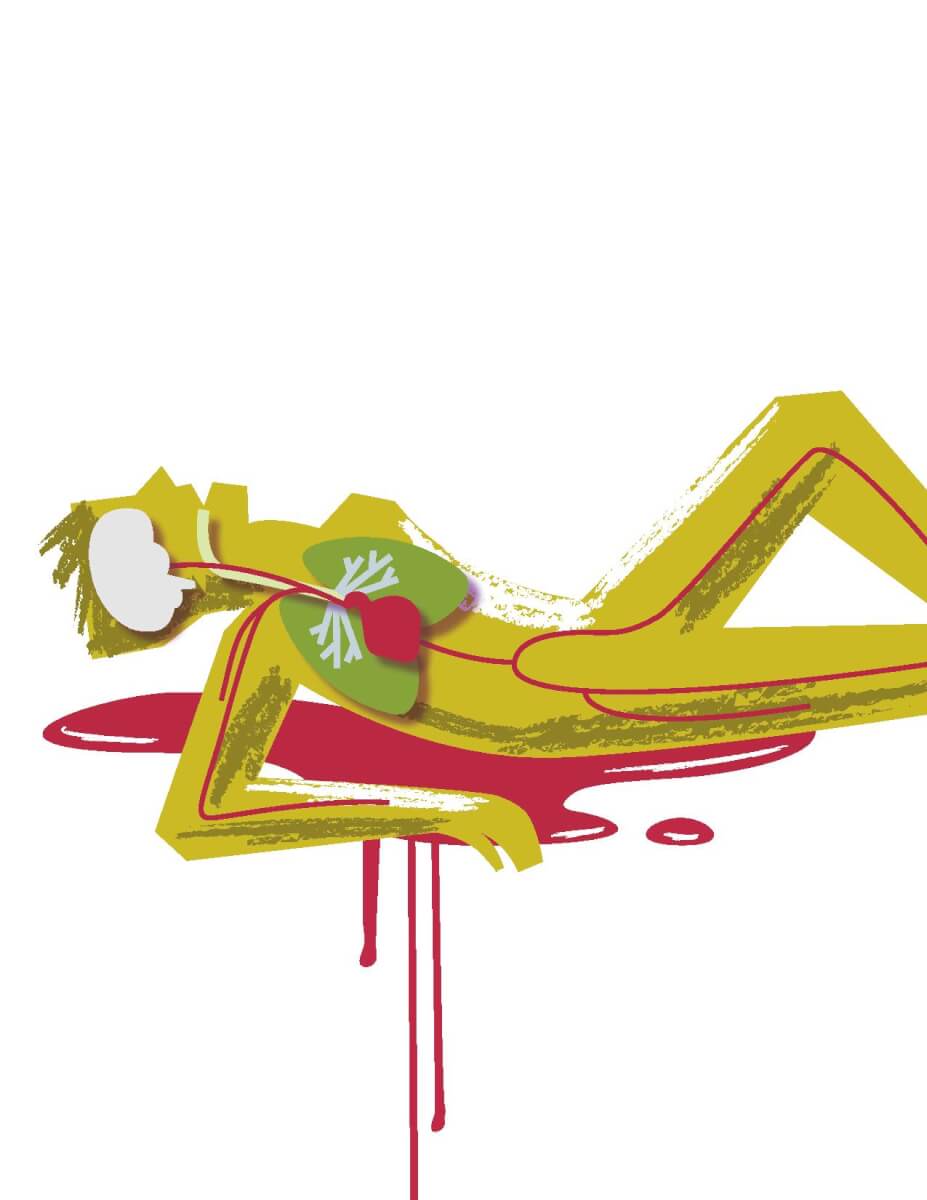Survival situations don’t always have a happy ending. A simple slip on a wet rock could lead to a compound fracture, or a trip on a root might result in being impaled on your own walking stick. You are bleeding severely and the tried and true methods aren’t working. Called exsanguination, you’re bleeding to death, but what’s really happening to your body?
In a situation of severe bleeding, the body tries to maintain blood pressure and blood flow to the most vital organs: the brain, heart, and lungs. This pressure is maintained mainly by squeezing all the main blood vessels in a process called vasoconstriction. Blood is now shunted away from the skin, limbs, and intestines, which is why a victim’s limbs become cold and bluish from the lack of fresh, oxygenated blood.
As the body struggles to maintain blood pressure, the total amount of blood flow and oxygen supply decreases to the rest of the body. If deprived of enough oxygen over a short period of time, cells in the body begin to use their fuel without oxygen in an inefficient manner that produces huge amounts of acids, mainly lactic acid. This leads to worsening acidosis.
Realizing that something is wrong, the victim will become hypotensive and restless from the lack of oxygen and blood to their brain. Their heart rate will increase, but their pulse will be weak because the heart tries to keep the blood pressure up. The person starts to feel anxious; something is very wrong. Panic sets it.
As the bleeding continues unabated, the amount of blood allowed to circulate continues to drop, and acid levels will skyrocket. Eventually, the acidosis will prevent the heart from working properly.
When the blood pressure drops below some critical level, which is going to be a little different for each person, the heart starts to go into an electrical disturbance called a cardiac arrhythmia. The heart essentially stops and the quick spiral to death ensues.
If a simple, small blood vessel was cut and neither pressure nor a tourniquet was applied, it could take many hours to bleed to death, but if a major artery was severed — jugular, aorta, etc.— it would take just a few minutes to bleed to death.
Did you know?
- Blood makes up around 7 percent of the weight of a human body.
- An average adult has about 10 pints of blood.
- Laid end to end, the total length of all arteries, capillaries and veins in one adult is about 60,000 miles.
- Capillaries are about 8 microns (1/3000 inch) in diameter, or about 1/10th the diameter of a human hair.
- Since the heart generates its own electrical impulse, it will continue to beat even if separated from the body.
- It only takes 20 to 60 seconds for a drop of blood to travel from the heart, through your body, and back to the heart again.
- Cayenne pepper can be sprinkled on small wounds to help stop bleeding.



